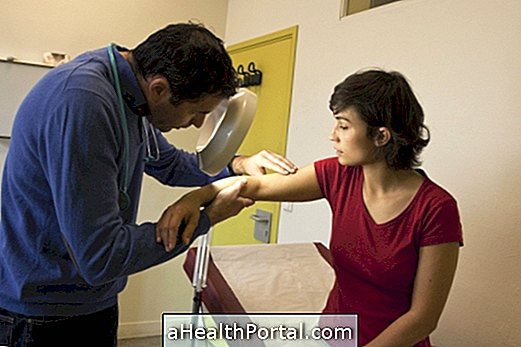Amoxicillin is one of the antibiotics most used to treat various infections in the body, as it is a substance capable of eliminating a large number of different bacteria. Thus, amoxicillin is usually used to treat cases of:
- Urinary infection;
- Tonsillitis;
- Sinusitis;
- Vaginitis;
- Ear infection;
- Skin and mucous membrane infection;
- Respiratory infections such as pneumonia or bronchitis.
Amoxicillin can only be purchased from conventional pharmacies with a prescription, under the trade names Amoxil, Novocilin, Velamox or Amoximed, for example. The price of Amoxicillin ranges from 6 to 30 reais, and can be purchased at conventional pharmacies or online stores.

How to take
The dose of amoxicillin and the time of treatment vary according to the infection to be treated and should therefore always be indicated by the physician. However, in most cases the general recommendations are:
For adults and children over 10 years of age, the recommended dose is 250 mg 3 times a day every 8 hours. In more severe infections, the doctor may suggest increasing the dose to 500 mg 3 times a day every 8 hours.
For children less than 10 years of age, the recommended dose is usually 125 mg, 3 times a day every 8 hours. In more severe infections, the doctor may suggest increasing the dose to 250 mg, and times a day, every 8 hours.
In the following table, the volumes or capsules corresponding to the recommended dosages are listed:
| Dose | Oral suspension 250mg / 5mL | Oral Suspension 500mg / 5mL | Capsule 500 mg |
| 125 mg | 2.5 mL | - | - |
| 250 mg | 5 mL | 2.5 mL | - |
| 500 mg | 10 mL | 5 mL | 1 capsule |
In people with renal impairment, the doctor may change the dosage of the medicine.
If a person has a severe or recurrent purulent respiratory infection, a dose of 3g, which is equivalent to 6 capsules, may be recommended every 12 hours. To treat gonorrhea, the recommended dose is 3 g, in a single dose, which is equivalent to 6 capsules.
In people with renal impairment, the doctor may change the dosage of the medicine.
Possible side effects
Some of the side effects of amoxicillin may include diarrhea, nausea, redness and itching of the skin. Here's how to treat diarrhea from using this antibiotic.
Does this antibiotic cut off the contraceptive effect?
Amoxicillin usually does not alter the effect of contraceptive, however, there are cases in which vomiting or diarrhea can occur, due to changes in the intestinal flora caused by the antibiotic, and may reduce the amount of hormones absorbed.
Thus, if diarrhea or vomiting occurs within 4 hours of taking the contraceptive, the efficacy of the pill is decreased and a condom should be used within 7 days. See which antibiotics cut the contraceptive effect.
Who should not take
This antibiotic is contraindicated for patients with a history of allergy to beta-lactam antibiotics such as penicillins or cephalosporins and for patients with allergy to amoxicillin or any of the components of the formula.
In addition, if the person is pregnant or breastfeeding, has problems or illnesses in the kidneys or if you are on other medicines, you should talk to your doctor before starting treatment.





















